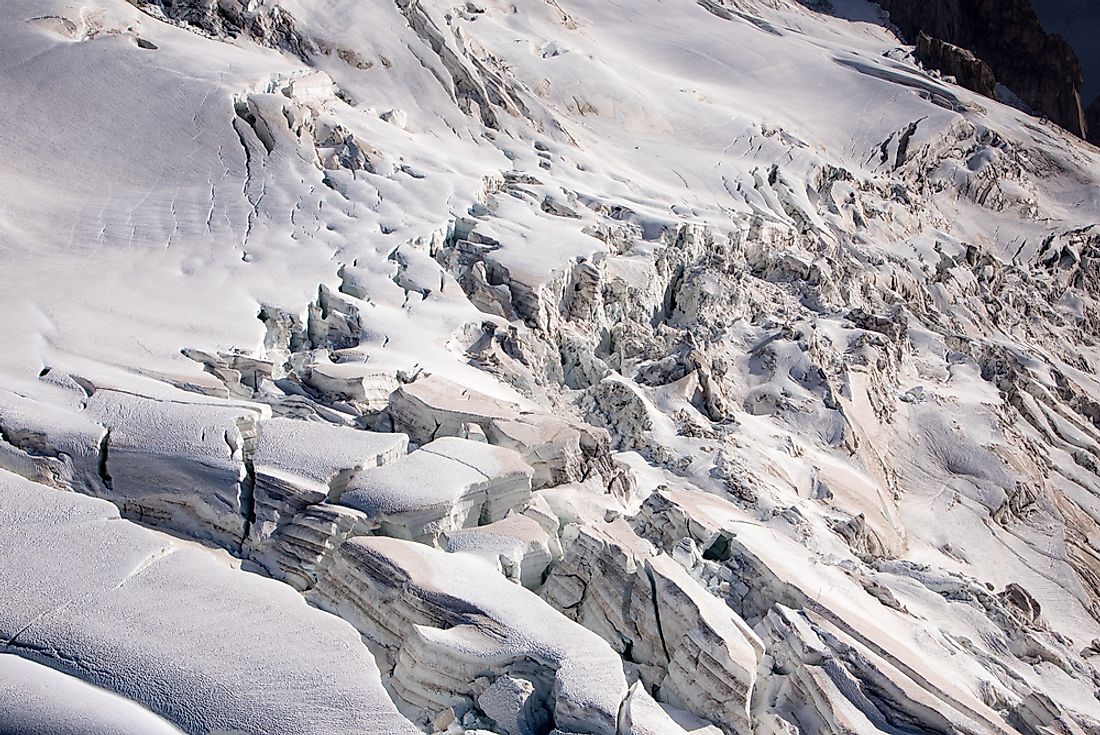What Is A Serac?

A serac is formed where two or more deep cracks that have been formed on ice sheets and glaciers, commonly referred to as crevasses, intersect with each other. At the point of intersection of the crevasses, a column of glacial ice is deposited, forming blocks of ice. In simpler terms, a serac can be defined as blocks or columns of ice formed at the point of intersection of crevasses. They are usually irregular in shape and in the form of tall pinnacles. In most instances, they are located just before or at the higher points of a steep slope. Seracs are large in size. In fact, they could be formed to a size of a house or even larger.
Formation of Seracs and Crevasses
Seracs mostly occur at the point of intersection of two or more crevasses. To understand the formation of seracs, it is necessary to understand how crevasses are formed. Crevasses, which are deep and large cracks on the ice sheets and glaciers, are usually formed due to the internal movements and activities occurring in the glaciers or the ice sheets. At their formation, the crevasses can expand to a width as big as 20 meters and a depth of up to 100 meters. The size of the crevasses entirely depends on the amount of liquid water in the glacier. Crevasses usually have vertical walls or walls that are nearly vertical. These walls can melt and form seracs or other ice formations and substrates. The seracs are mostly formed during icefall, and the size depends on the severity of the icefall at the point of intersection of crevasses. Crevasses are mostly formed under or lower point of a steep glacier. The ice in some instances moves from the higher points of the glacier and deposited at the intersection points of the crevasses. They mostly occur within an icefall, at the edge of an ice cliff and at the margins of fast-moving ice.
Dangers of Seracs
As the seracs are formed at the intersecting crevasses, they do not firmly stand and tend to be quite unstable. Seracs do pose a lot of danger to unsuspecting mountaineers. The collapsing and breakage of seracs can be fatal. The seracs can make the mountaineers topple and get badly injured during their mountain climbing. In severe incidents, breakage of the seracs has led to the death of mountaineers. For instance, during the Japan expedition on Mount Everest, Kayak Tsering was hit and killed by a falling serac. 8 out of 11 mountaineers met their death after a large serac collapsed and hit them during the August 2008 K2 Disaster. In April 2014, the Mount Everest ice avalanche led to the death of 16 mountain climbers after they were hit by a serac that had broken off. As the cold weather persists, the seracs become more firm and stable, a situation that tampers with glacier travel. Unfortunately, before the occurrence of serac disasters, there are usually minimal to no signs that signify the pending disaster. They mostly collapse or break off without any warning.







